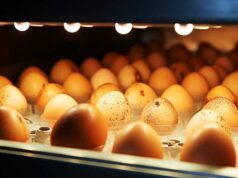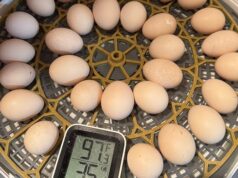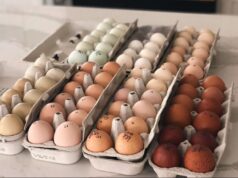Raising baby chicks can be a rewarding and fulfilling experience. However, to ensure their healthy growth, it’s critical to understand the chick brooder requirements. A brooder provides the warmth and comfort these little fluff balls need in the absence of their mother hen.
Before bringing new chicks into your life, let’s delve into the fundamental chick brooder requirements and set the stage for a successful and enjoyable journey into poultry keeping.

What Is a Brooder?
A brooder serves as a nursery for young poultry. It is a secured and controlled environment that supplies all the basic needs of chicks such as heat, shelter, food, and water. Understanding each element and how it impacts the small chicks is crucial for their survival and development.
Learn more about What is a Chick Brooder.
Types of Brooders
Brooders come in various forms and sizes. You can purchase a pre-made one from farm supply stores or even create a DIY version at home. Each type has its own set of advantages and disadvantages depending on your personal preferences and needs.
Check out our guide on How to Make a Chick Brooder for more information.
Homemade Brooders
One of the popular choices among chicken enthusiasts is the homemade brooder. With materials readily available at home such as cardboard boxes, plastic tubs, or boxes, you can create a functional space that suits your chicks’ needs.
Commercial Brooders
Commercial brooders offer a more durable and often more advanced alternative compared to homemade versions. These are especially useful for those who intend to raise a larger flock.
Components of a Brooder
For a brooder to be efficient, it should include a few essential components:
Heat Source
A heat source is one of the most critical chick brooder requirements. Chicks are born without feathers to regulate their body temperature, so they need external warmth. Heat lamps, heated plates, or brooder heat panels can be used for this purpose.
Bedding Material
Bedding or litter provides insulation against the cold floor and helps absorb spills. Wood shavings, shredded paper, or even straw are commonly used as bedding. It’s important to keep it clean and dry to prevent health issues.
Feeder and Waterer
A consistent supply of fresh water and proper nutrition is essential for healthy growth. The feeder and waterer should be easily accessible yet sturdy enough to prevent tipping.
Setting Up the Brooder
Preparation is key when setting up a brooder. Start by choosing a location that is easily accessible but well-protected from drafts and predators. Set up the heat source, and ensure that it can maintain a consistent temperature throughout.
Check out our in-depth article on How to Set Up a Chick Brooder.
Temperature Management
The right temperature is crucial for chick health and comfort. Start with around 95F (35C) in the first week, gradually decreasing by 5F each week as the chicks grow and start developing feathers.
Monitoring Temperature
Use a thermometer to regularly monitor the brooder’s temperature. Place it at chick level to get an accurate reading.
Adjusting Heat
If chicks crowd away from the heat source, it may be too warm, while huddling directly under the heat could mean it’s too cold.
Lighting
Chicks respond to light and it stimulates activity. Provide around 16 hours of light daily when they are young, reducing gradually to simulate natural patterns.
Feeding the Chicks
Nutrition plays a vital role in the growth and development of chicks. A balanced starter feed formulated specifically for chicks should be provided.
Choosing the Right Feed
Look for starter feeds with suitable protein and nutrient levels. Avoid feeding adult chicken feed as it will not meet the nutritional needs of the chicks.
Supplementation
Consider adding probiotics or vitamins to boost the chicks’ immunity and overall health, especially if they show signs of distress or are raised under less-than-ideal conditions.
Water Requirements
Water is just as vital as food. Ensure the chicks have constant access to clean, fresh water. Refill and clean the waterer daily to prevent bacterial growth.
Common Challenges
Raising chicks can come with its own set of challenges. Understanding these issues and how to address them can help maintain a healthy flock.
Brooder Pile-Ups
This occurs when chicks crowd together, often due to cold temperatures or fear. Adjusting the brooder conditions can prevent this dangerous situation.
Health Issues
Watch for signs of illness like lethargy, sneezing, or digestive issues. Prompt attention and care can help avoid further complications.
Introducing Chicks to the Coop
Once the chicks have grown and developed their feathers, its time to introduce them to the coop. This process should be gradual to prevent stress and aggression from existing flock members.
Explore the stages in Chick Brooder Basics.
Conclusion
Caring for chicks is a journey that requires knowledge, patience, and dedication. By understanding the necessary chick brooder requirements, you set the foundation for healthy and vibrant chickens. Enjoy the delightful world of poultry raising and all the rewards it brings.
For more tips on setting up a brooder, visit this helpful guide.

FAQs
What is the ideal temperature for a chick brooder?
Start at 95F (35C) in the first week, then decrease by 5F weekly until fully feathered.
How often should the brooder be cleaned?
Keep the brooder clean by removing wet bedding and waste daily. A thorough cleaning should be done weekly.
When can chicks be moved to the coop?
Chicks can transition to the coop when they are nearly fully feathered, usually at 6-8 weeks old.
This article contains affiliate links. We may earn a commission at no extra cost to you.










